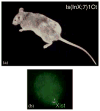X-chromosome inactivation and escape
- PMID: 26690513
- PMCID: PMC4826282
- DOI: 10.1007/s12041-015-0574-1
X-chromosome inactivation and escape
Abstract
X-chromosome inactivation, which was discovered by Mary Lyon in 1961 results in random silencing of one X chromosome in female mammals. This review is dedicated to Mary Lyon, who passed away last year. She predicted many of the features of X inactivation, for e.g., the existence of an X inactivation center, the role of L1 elements in spreading of silencing and the existence of genes that escape X inactivation. Starting from her published work here we summarize advances in the field.
Figures


References
-
- Barr ML, Bertram EG. A morphological distinction between neurones of the male and female, and the behaviour of the nucleolar satellite during accelerated nucleoprotein synthesis. Nature. 1949;163:676. - PubMed
Publication types
MeSH terms
Grants and funding
LinkOut - more resources
Full Text Sources
Other Literature Sources
